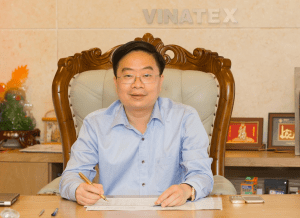Introduction
The apparel industry, known for its resource-intensive nature, is shifting towards sustainability due to growing consumer demand for eco-friendly products and the need to address environmental challenges. Vietnam is well-positioned to lead this change by adopting green manufacturing practices, including sustainable material sourcing, energy-efficient production, waste management, water conservation, and green certifications.
Vietnam’s Potential to Lead in Sustainable Garment Manufacturing
Vietnam is a top apparel exporter, with the garment industry contributing 16% to GDP and 10% to export revenue. Known for high-quality, low-cost production, the industry still has room to improve sustainability. Consumers are increasingly prioritizing sustainability in their purchasing decisions. A McKinsey survey shows 66% are willing to pay more for sustainable products, with 75% of younger consumers doing so.
Key Drivers of Sustainability in the Apparel Industry
Regulatory Pressures: Governments around the world are implementing stricter environmental regulations, including carbon emissions reduction targets, waste management standards, and water usage limits.
Corporate Social Responsibility (CSR): Companies are increasingly adopting CSR policies to align with global standards for environmental and social responsibility.
Consumer Preferences: With rising awareness about climate change, pollution, and labor conditions, consumers demand greater transparency and ethical practices from brands.
Supply Chain Pressures: Global buyers, including retailers like H&M, Zara, and Nike, are increasingly focusing on sustainable practices when selecting suppliers.
International Standards and Certifications for Sustainable Practices
- Global Organic Textile Standard (GOTS): Certifies organic textiles, ensuring environmental and social sustainability.
- OEKO-TEX: Ensures that textiles are free from harmful chemicals and safe for human health.
- Higg Index: A comprehensive suite of tools for measuring and improving sustainability across the apparel value chain, from materials to manufacturing.
Vietnam’s Current Landscape in Green Manufacturing
Vietnam is a major player in the global garment market, with its apparel industry valued at over $40 billion in exports annually. The country benefits from an established export infrastructure and a strong supply chain, particularly in the textile and garment sectors.
Challenges and Gaps in Adopting Sustainable Practices
Lack of Awareness: Many manufacturers are unaware of the potential benefits of green manufacturing practices, and some still see sustainability as a luxury rather than a necessity.
Cost of Transition: Implementing sustainable practices can be expensive, particularly for smaller factories that lack the resources to invest in renewable energy, waste management systems, or certifications.
Inadequate Infrastructure: Vietnam’s manufacturing infrastructure is not yet fully equipped to support large-scale sustainable practices, such as advanced wastewater treatment and energy-efficient machinery.
Limited Access to Green Technology: While global companies are adopting advanced green technologies, many local manufacturers in Vietnam lack access to the necessary equipment or expertise.
Success Stories of Vietnamese Apparel Manufacturers Going Green
Despite challenges, Vietnamese manufacturers like Vinatex use solar power for energy savings, while TNG Investment adopts water recycling and wastewater treatment to reduce environmental impact.
“Digital transformation in the supply chain is very important for textile and garment enterprises.”

Mr. Le Tien Truong
Chairman of Board of Directors, Vinatex
Strategies for Incorporating Green Manufacturing
Sustainable Material Sourcing
Promoting the Use of Organic and Recycled Fabrics: Apparel manufacturers can switch to sustainable materials like organic cotton and recycled polyester. Vietnam can promote this by partnering with eco-friendly suppliers.
Partnering with Suppliers for Sustainable Inputs: By collaborating with suppliers who are committed to sustainable practices, Vietnamese garment manufacturers can ensure that their entire supply chain meets environmental and social standards.
Energy-Efficient Manufacturing Practices
Adoption of Renewable Energy (e.g., Solar and Wind): Factories can reduce their carbon footprint by switching to renewable energy like solar and wind power. For instance, Carmex Saigon uses solar panels to cut energy costs and emissions.
Retrofitting Factories for Energy Efficiency: Retrofitting existing factories with energy-efficient technologies, such as LED lighting, advanced insulation, and high-efficiency heating and cooling systems, can lead to substantial energy savings and reduced environmental impact.
Waste Management and Circular Economy
Reducing Textile Waste through Recycling and Upcycling: Textile waste is a major issue in the apparel industry. Vietnam’s garment manufacturers can adopt practices like fabric recycling and upcycling, where waste materials are reused to create new garments or products.
Developing Circular Design Models: Circular design enables garments to be easily disassembled and recycled. Vietnamese manufacturers can adopt these principles to reduce waste and promote sustainable lifecycles.
Water Conservation Techniques
Efficient Water Usage and Wastewater Treatment Technologies: Water usage is a critical environmental issue in garment manufacturing. Factories can reduce consumption by using water-efficient machinery, closed-loop systems, and investing in wastewater treatment technologies.
Case Studies of Water-Positive Initiatives: Companies like Dong Nai Garment Corporation have implemented water treatment plants and wastewater recycling systems, drastically reducing their water consumption and making their operations more water-positive.
Green Certifications and Compliance
Investing in Global Certifications: Obtaining certifications like GOTS, OEKO-TEX, and Higg Index can help Vietnamese garment manufacturers gain access to international markets and meet the sustainability standards required by global buyers.
The Role of Compliance in Attracting Global Buyers: Many international buyers require their suppliers to adhere to sustainability certifications. By obtaining these certifications, Vietnamese manufacturers can differentiate themselves in the market and attract more business from global brands focused on sustainable sourcing.
Technology is key to sustainability in the apparel industry. By using automation, AI, and digital tools, factories can optimize production, reduce waste, and improve sustainability. Blockchain can also enhance supply chain transparency, ensuring sustainable practices throughout production.
Economic and Social Impacts of Green Manufacturing
Cost Savings: Energy efficiency, waste reduction, and resource optimization lead to cost savings over time, making the transition to green manufacturing more economically viable.
Enhanced Brand Reputation: Companies that adopt sustainable practices can improve their brand image and attract eco-conscious consumers and buyers.
Improved Worker Welfare: Sustainable manufacturing practices often involve improving working conditions, health and safety standards, and fair labor practices, contributing to better worker welfare.
Collaborative Opportunities for Vietnam
Collaboration among public and private sectors, international development agencies, and industry associations such as VITAS is key to driving sector-wide sustainability. By working together, these stakeholders can share resources, knowledge, and best practices to accelerate the transition to green manufacturing in Vietnam.
The Vietnamese government can support green manufacturing by offering incentives like tax breaks, grants, and subsidies for sustainable practices. Policies encouraging innovation in sustainable manufacturing will also help position Vietnam as a global sustainability leader.
Groyyo Consulting’s Role in Green Journey in (Patronus) India
- 107-Watt Solar Panel: We provide energy-efficient solar panels, reducing reliance on non-renewable sources and lowering carbon emissions.
- Rainwater Harvesting Setup: Our systems capture and store rainwater, reducing water usage, promoting sustainability, and alleviating pressure on local water sources.
- Effluent Treatment Plant Setup: We install advanced treatment plants to filter and recycle wastewater, minimizing pollution and ensuring compliance with environmental standards.
- Zero Liquid Discharge Strategy: Our strategy eliminates wastewater discharge by recycling and reusing water, promoting conservation and reducing environmental impact.
Vietnam’s Roadmap to Lead in Green Manufacturing
Vietnam can lead in green manufacturing by setting short-term and long-term goals, such as achieving a specific percentage of energy use from renewable sources or reducing waste by a set amount. By establishing clear metrics for success and fostering collaboration, Vietnam can become a global hub for sustainable apparel.
Conclusion
We conclude stating that Vietnam can lead the shift to sustainable apparel manufacturing by adopting effective strategies and strong partnerships. With support from experts like Groyyo Consulting, it can shape a greener future for the global fashion industry.

Divya Mohan
General Manager (International Business)
divyamohan@groyyo.com


Leave a Comment